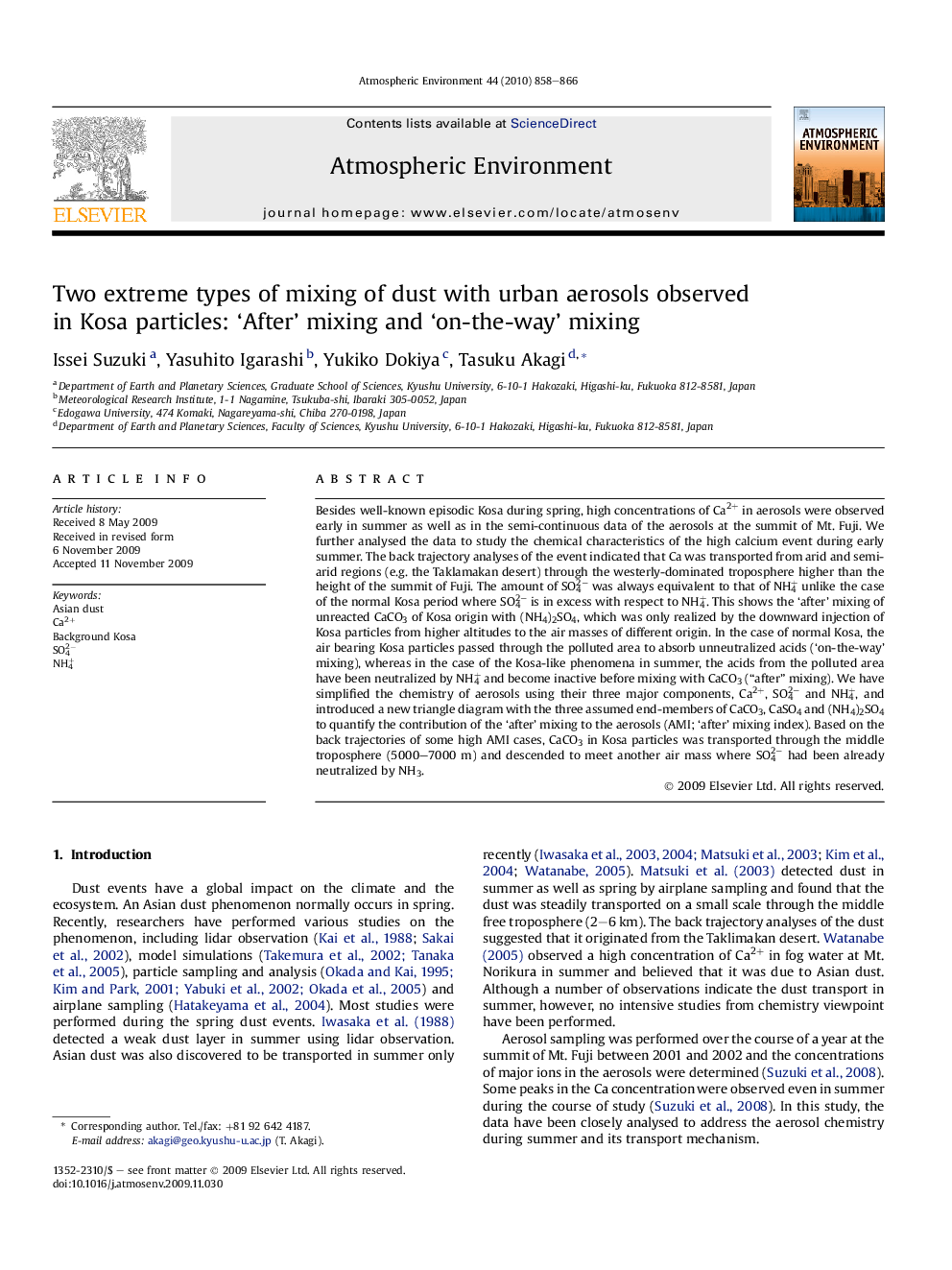| Article ID | Journal | Published Year | Pages | File Type |
|---|---|---|---|---|
| 4441094 | Atmospheric Environment | 2010 | 9 Pages |
Besides well-known episodic Kosa during spring, high concentrations of Ca2+ in aerosols were observed early in summer as well as in the semi-continuous data of the aerosols at the summit of Mt. Fuji. We further analysed the data to study the chemical characteristics of the high calcium event during early summer. The back trajectory analyses of the event indicated that Ca was transported from arid and semi-arid regions (e.g. the Taklamakan desert) through the westerly-dominated troposphere higher than the height of the summit of Fuji. The amount of SO42− was always equivalent to that of NH4+ unlike the case of the normal Kosa period where SO42− is in excess with respect to NH4+. This shows the ‘after’ mixing of unreacted CaCO3 of Kosa origin with (NH4)2SO4, which was only realized by the downward injection of Kosa particles from higher altitudes to the air masses of different origin. In the case of normal Kosa, the air bearing Kosa particles passed through the polluted area to absorb unneutralized acids (‘on-the-way’ mixing), whereas in the case of the Kosa-like phenomena in summer, the acids from the polluted area have been neutralized by NH4+ and become inactive before mixing with CaCO3 (“after” mixing). We have simplified the chemistry of aerosols using their three major components, Ca2+, SO42− and NH4+, and introduced a new triangle diagram with the three assumed end-members of CaCO3, CaSO4 and (NH4)2SO4 to quantify the contribution of the ‘after’ mixing to the aerosols (AMI; ‘after’ mixing index). Based on the back trajectories of some high AMI cases, CaCO3 in Kosa particles was transported through the middle troposphere (5000–7000 m) and descended to meet another air mass where SO42− had been already neutralized by NH3.
